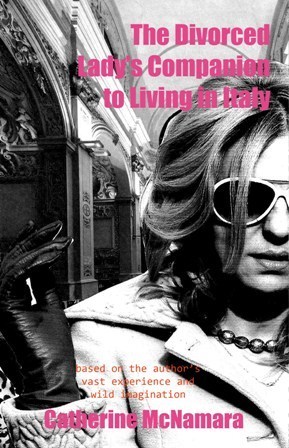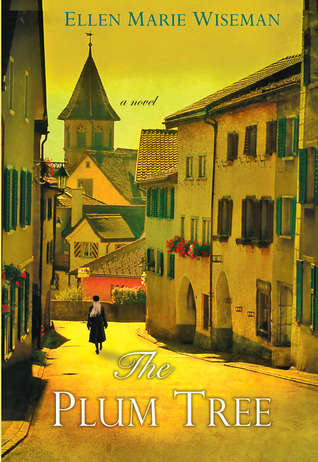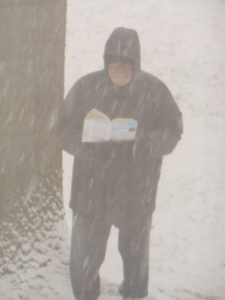Amy Sue Nathan's Blog: Women's Fiction Writers, page 42
January 26, 2013
Book Covers, Tea Cups* and Blustery Cold
In certain scenes in The Glass Wives, Evie and her friends Beth and Laney drink coffee at Evie’s kitchen counter. Nicole, on the other hand, drinks tea. And yes, I know the cover isn’t literal, but I can’t help it…I like a little literal now and then, and there is both literal and metaphorical meaning in this cover. As there is in the title.
But more importantly, what’s in your cup today?
Today I had Starbucks Blonde Roast (made at home) which is my weekend coffee (too $$$ for every day). But tonight in my cup I think I’ll take something a little stronger, just to offset the cold and add to the ambience as the dogs and I hunker down for movie night in front of the fire!
And yes, this is the final cover, which I just happened to see today as I was poking around on Goodreads! 64 people have added it to their to-read list, and two early readers have given it five stars. I know that opinions vary with all books, but that was a very nice way to start a very cold Saturday!
Amy xo
Why the asterisk after Tea Cup? Because technically, based on a few China cup experts I know, these are indeed coffee cups, based on the shape and the absence of a saucer. Not that I needed them to be coffee cups because I’m literal and the characters drink coffee not tea. But I’m just saying. That my friends, is called cover karma.

Pink/pink, blue/pink, or pink/blue. I think it’s the perfect cover for The Glass Wives. Hope you agree! (If you’ve read it, or when you do, chime in!)


January 24, 2013
Guest Post by Catherine McNamara: Launching A Book Is Like Sending A Child To Play In Traffic
Ooh la la! Catherine McNamara is one of WFW’s international author friends and this post comes to you directly from a very hip cafe in Paris.
Cat was with us when her book launched in April 2012, and wanted to share what’s she has been through since then, and where she’s headed.
Please welcome Catherine McNamara back to Women’s Fiction Writers!
Amy xo
Agreeing With Virginia Woolf
 Virginia Woolf once said that publishing a book was like sending a child into traffic. Six months ago, in April 2012, I sent my youngest babe into the world, into the traffic.
Virginia Woolf once said that publishing a book was like sending a child into traffic. Six months ago, in April 2012, I sent my youngest babe into the world, into the traffic.
This child had taken several years to produce, had been rejected and revised and resubmitted, had required endless revisions, buckets of doubt, loads of hope. I had found the publisher of my dreams, signed a contract, worked for months with a finicky editor, approved a sassy cover and organised a smashing and nerve-wracking book launch in London.
And then?
The first question many people ask is ‘How many copies have you sold?’ Of course. An obvious question, polite enough. Especially when your sex romp set in glamorous Italy comes out the same year as ‘Fifty Shades of Grey’.
What to say? What to reply when your book has hit the shelves and you see everybody reading a bestseller that is not quite your own?
I asked a woman writer whose first two story collections were published quietly with an independent press, and whose first novel was recently a top newspaper choice in the UK. She said: ‘Catherine, don’t tie yourself in knots over sales.’ Hmmm.
She said she did miles of readings, book signings, as many events as she could cram in. She said it was hard but rewarding work, getting to know her readers, learning how to handle her public. Learning to call herself a writer.
She also said something VERY valuable for me: ‘Get working on your next project. Write. Do what you do best.’
And these are the words I often repeat to myself. Over the past six months I have blogged weekly, flogged my books in Italian bookshops, spoken to refined readers who asked awkward questions. I’ve proposed myself for festivals and been interviewed on a stage with a microphone and a jug of water. I’ve been interviewed by phone from Australia (in Italian) in my pyjamas. I’ve been handed a mike in a piazza in Matera, southern Italia, thankfully fortified by a glass of strong red. I’ve been stopped in the street (small Cornish town) and had to think of a gazillion nice things to write inside book jackets. I’ve dropped my bookmarks in airports, fashion trade fairs, buses and bookshops. I’ve done guest posts, entered competitions, done giveaways.
Endless, right? In fact it’s been draining, rewarding, scary and I still don’t have millions in the bank. Sometimes I worry I spend too much time on promotion. Sometimes I worry I haven’t pushed enough. Sometimes I worry I’ll never write another pure and focused word.
Sometimes I think I’ve created a monster!
That’s when I think back to my writer mentor’s words. ‘Don’t think about sales. Get back to writing. Write.’
And I have. I was lucky enough to have a good bank of literary short stories to pull together and submit before my first book even came out. I was lucky enough to find a publisher who is letting me change genre – from women’s romantic comedy to literary stories set mostly in Africa.
Lucky. Unbelievable. A second book. Hardly a moment to fret or get depressed.
And now it begins again. A year after my first novel came out, I’ll be publishing a second book in the UK. More revisions. More cover angst. More begging for significant reviews. Argh!
It feels like I am sending yet another child into traffic.
 Catherine McNamara grew up in Sydney and moved to Paris to study French, and ended up in Ghana running a bar. She is the author of ‘The Divorced Lady’s Companion to Living in Italy’ (to be released in April 2012 by Indigo Dreams Publishing UK) and wrote the children’s book ‘Nii Kwei’s Day’. Her story collection ‘Pelt and Other Stories’ will be published in 2013. After many years in West Africa Catherine now lives in northern Italy where she complains about the government, translates for a WWI Eco-museum and skis fanatically. She has great collections of African sculpture and Italian heels.
Catherine McNamara grew up in Sydney and moved to Paris to study French, and ended up in Ghana running a bar. She is the author of ‘The Divorced Lady’s Companion to Living in Italy’ (to be released in April 2012 by Indigo Dreams Publishing UK) and wrote the children’s book ‘Nii Kwei’s Day’. Her story collection ‘Pelt and Other Stories’ will be published in 2013. After many years in West Africa Catherine now lives in northern Italy where she complains about the government, translates for a WWI Eco-museum and skis fanatically. She has great collections of African sculpture and Italian heels.


January 17, 2013
Help Choose The New(ish) Cover For The Glass Wives!
We’ve tweaked the cover for The Glass Wives, my friends! Can you believe it? I loved, loved, loved the original cover but this change makes sense to me as it represents the two main characters in the book as being different, as well as similar.
That being said, WE want to know what YOU think! Which cover do you prefer? That’s right! My editor and my publisher want to know what YOU think (they are awesome like that). The original cover is off-the-table, so pick A or B and have your say! You can leave me a comment as well, of course, and let me know your thoughts. I know it seems like a small change, and while it might be technically small, a lot of very smart publishing professionals have put their heads together to come to this conclusion. I am fortunate they care so much about The Glass Wives, even if I did have teacup nightmares once or twice since last week.
When the cover is officially official (again) I’ll post it here!
You can click on the image below to see the covers even larger. Don’t forget to participate in the poll below!


Guest Post: Writing From The Inside by Nancy LaPonzina
It’s always fun to hear how others writers find their zone and their stories. It’s interesting what motivates a writer to write or an author to finish a tens of thousands of words of a novel.
The same things do not work for every writer, which is important to remember, but the most important thing is—something can work if you work it!
Please welcome Nancy Ponzina to Women’s Fiction Writers!
Amy xo
Writing From The Inside
 Writing is a balance between the inner creative process and reality. When I’m writing from the inside, I find affirmation visits me in surprising ways.
Writing is a balance between the inner creative process and reality. When I’m writing from the inside, I find affirmation visits me in surprising ways.
My first novel, Nardi Point, sat in my head for a good while, like most first novels seem to do. In the very first stages of story inception, I felt drawn to explore how past cultures led to where we are now. When writing a first novel there is the luxury of time. No deadlines, polite reminders from agents or publishers, just time to write and yes, rewrite that first chapter. The story idea, the characters, and setting build slowly until suddenly a rush to paper pushes it out into the physical world.
I write what I like to read. Stories where I learn things along the way are especially satisfying, whether that be a travel location, archaeology, alternative medicine, the metaphysical world, or art and design. I honor and take cues from synchronicity, those seemingly haphazard events that take on special meaning for me … if only I listen and pay attention.
Ask writers about their dreams and you’ll be enlightened at how often that world pollinates a manuscript. For me, a dream of two words, NARDI POINT crystalized my story. The words appeared against a white background. Maybe it was a page, but I couldn’t identify that at the time. Of course I Googled it for hours without an answer.
I’ve always been one to pay attention to dreams and right-brain messages, but was still without insight to the entry. It couldn’t be found on Google, then what was it? What could it be? I tried an anagramming strategy, rearranging the letters any way possible and the results stopped me dead. The letters formed INDIAN PORT, exactly what my story would involve, artifacts from nearly 10,000 years ago from the Native American Woodland Period.
And how did Nardi Point correspond to Indian port? Why certainly it sounded like a housing subdivision, surely that was it. Nardi Point would be a new subdivision where artifacts were discovered on a home building site during construction. The surge was growing. A subdivision would be where a young couple might go to find a new home, perhaps their first home. Home construction is notoriously pressure-producing particularly, on a young couple. How would it affect their relationship? Their lives? Would the past, bury their future?
But the encouragement for the story was not over yet, not by far. I chanced upon a small appeal for volunteers discreetly positioned in the local papers. Where were these volunteers needed? At the State Archaeology offices. I opened my cell and with adrenalin-fueled enthusiasm pushed the numbers. And what do you suppose my project at the State Archaeology office was? Not only cataloging Eighteenth Century ceramics … but washing and preparing sherds of Native American Paleo-Indian artifacts … over 10,000 years old! I processed these sherds in my very own hands!
So then words poured out from the inner world and met real constraints. What would my story’s physical “container” be, meaning how many chapters? How many scenes? How many words? What about genre? The story couldn’t be Romance because there was a greater story about conserving prehistoric archaeological sites and discovering a cultural heritage, than just gal-meets-guy and lives happily ever after. I analyzed and overthought it all, but the momentum couldn’t be stopped. And finally, the manuscript was completed, that first dirty draft. I still struggled with loving it, getting chills when I worked on it, and at the same time having my critical editor-self cast disparaging comments when I faltered. It was my first story after all.
Then came the magical, fairy tale, third-times-the-charm event. We visited an upscale golf club subdivision near Charlotte, North Carolina. Part of our visit included a promotional sales event for the golf community’s subdivision. Accompanied by the realtor sales agent, we walked past a section of woods where yellow plastic tape had been posted. I felt chills. I looked at the wooded area and asked the realtor, knowing what he would say, why the land had been posted. His response? “Aw, some Indian artifacts were found there. We can’t build there. These things happen in North Carolina.” My head swam, my heart flipped against my chest, and I submitted my manuscripts the very next morning!
The small signs along the way gave me the confidence to start the Nardi Point sequel, Paths through the Garden. I look forward to many flower-filled meadows coming into my writing life!
 Award winning author Nancy LaPonzina writes in the Franklin County countryside minutes from Raleigh, North Carolina, under Carolina blue skies. Her first story, The Missing Desk Mystery, was written in second grade on loose-leaf pages bound with pink satin ribbon. Her professional career includes technical writing, providing website content, clinical Registered Professional Nurse experience, and tax paraprofessional. However, publication in ARTnews, Ingenue, American Girl, True Astrology Forecast, Psychic Astrology Horoscope national magazines, and Examiner.com, LiveStrong.com, confirm paper, books, journals—all things writing—are her true touchstones.
Award winning author Nancy LaPonzina writes in the Franklin County countryside minutes from Raleigh, North Carolina, under Carolina blue skies. Her first story, The Missing Desk Mystery, was written in second grade on loose-leaf pages bound with pink satin ribbon. Her professional career includes technical writing, providing website content, clinical Registered Professional Nurse experience, and tax paraprofessional. However, publication in ARTnews, Ingenue, American Girl, True Astrology Forecast, Psychic Astrology Horoscope national magazines, and Examiner.com, LiveStrong.com, confirm paper, books, journals—all things writing—are her true touchstones.
LaPonzina’s women’s fiction explores thoughtful characters involved in challenging situations, and braids in touches of archaeology, the metaphysical, and alternative healing modalities. She is a member of Romance Writers of America, Heart of Carolina Romance Writers, Triangle Area Freelancers, Friends of the Youngsville Library, General Federation of Women’s Clubs of North Carolina, Youngsville Woman’s Club, American Holistic Nurses Association, and the Coe Foundation for Archaeologic Research. She lives in Youngsville, with dear husband Thom, and their rescue Maine Coon cat, Copy.
Her debut novel, Nardi Point, regionally set in Raleigh, North Carolina was awarded the Chanticleer Book Review & Media 2012 Blue Ribbon First Place Published Novel award in the Contemporary Women’s Fiction genre. Nardi Point is available from Rebel Ink Press, Amazon.com /Kindle and paperback, Barnes & Noble/Nook, ARe, BookStrand, QuailRidge Books and Music, Zest Café and Home Art, and Dancing Moon Bookstore.
You can find Nancy on Facebook, Twitter: @NancyLaPonzina and Pinterest. You can watch a book trailer for Nardi Point, here.


January 15, 2013
Do You Hear What I Hear?
 I am huge fan of audiobooks. On any stint when I’m a gymrat, I listen to books while I work out. For me, the time passes much more quickly than when I listen to music. I listened to the entire collection of David Sedaris books one summer on the treadmill, and that fall I made my way through Jen Lancaster books while huffing and puffing on the elliptical After that, I realized how time would fly if I was listening to a great story while I was doing something else I really didn’t like doing. Housework! So I started listening to books while I folded the laundry or scrubbed the bathroom. When my son started college in 2010, and ever since, audio books are my steady companions on my four-hour drive to visit him in the depths of Indiana.
I am huge fan of audiobooks. On any stint when I’m a gymrat, I listen to books while I work out. For me, the time passes much more quickly than when I listen to music. I listened to the entire collection of David Sedaris books one summer on the treadmill, and that fall I made my way through Jen Lancaster books while huffing and puffing on the elliptical After that, I realized how time would fly if I was listening to a great story while I was doing something else I really didn’t like doing. Housework! So I started listening to books while I folded the laundry or scrubbed the bathroom. When my son started college in 2010, and ever since, audio books are my steady companions on my four-hour drive to visit him in the depths of Indiana.
And while it’s an odd thing to suggest, this Spring you will be able to listen to The Glass Wives while scrubbing your own bathroom or running on the treadmill or on a long, flat drive to visit your own kid somewhere!
That’s because The Glass Wives audio rights have been sold to Brilliance Audio! That means when the book is available to read, it will also be available to hear.
No, I won’t be the narrator. But I will be a listener.
That’s right, I plan to listen to the book. After all, I might have written it and read it aloud to myself seventy gazillion times, but I’ve never had it read—to me!
I love to read. I read almost every day, but listening to a book is a wonderful way to experience it. If you’ve never listened to an audiobook (although I almost always refer to them as a books-on-tape, jeez) know that the book isn’t just read, it’s performed. It’s a sensory experience different from reading because while you can rest your eyes (not while you’re cleaning or driving, please) the pace of the story is determined by the performer. It’s like watching a movie and sitting on the edge of your seat waiting for something to happen, but not being able to hit fast forward. I tend to read quickly—and audio books slow me down, which I appreciate.
It’s true, sometimes I’m so engrossed in the story that I do more listening than anything else, and I have a feeling it will be difficult to concentrate on anything other than The Glass Wives when I’m listening to it. I’ll report back and let you know! And if you listen to The Glass Wives, please let me know.
I look forward to hearing what you think!
So, are you a fan of audio books? And what do you do while listening? If you’ve never listened to a book (no, not on tape, I caught myself) is it something you’d consider?


January 11, 2013
The Glass Wives ARC Winner Announced!!!
Friends,
Thank you so much! Over 200 people signed up for my Infrequent Yet Delightful Newsletter and with the tweeting and sharing that equalled over 250 entries. I used random.org to choose the winner.
AND THE WINNER IS…
JULIA MUNROE MARTIN
Congratulations, Julia! I will email you this morning to get your address and I’ll get this book baby in the mail to you!
Julia is someone I know from the Women’s Fiction Writers and on Twitter and I looked twice (okay, three times) when I saw her name! I mean, we even bantered about the likelihood of someone winning when spreading the news of the giveaway meant lessening one’s chances, but she was kind enough to do it anyway.
How’s that for Twitter karma?
There will be more opportunities to win copies of THE GLASS WIVES here and elsewhere. I’ll always keep you posted!
Thank you again for you amazing enthusiasm and unwavering support. It steadies me, folks. Truly, it does.
Amy xo


January 9, 2013
Writing 20 minutes a day, 365 Days A Year. Are You In?
One thing I know for sure is that writing is a personal endeavor. Karen and Cathy (whom you’ll meet below) know that too. And while I often bristle at the suggestion that I MUST write daily, I did not when K and C contacted me. Why? Because this is their goal for 2013 and they’re offering other writers the opportunity to join them in their quest to conquer the things that keep them from writing. They’re not telling anyone what to do, they’re offering accountability and a place to connect!
Full disclosure, I do not write every day all year long. But it works for many, many writers. Maybe it will work for you!
This is the time of year when resolutions are made, excuses are found, and plans are thwarted. Check out Write Despite and see if you can stick with it for the long haul!
Please welcome Karen and Cathy to Women’s Fiction Writers!
Amy xo
Writing 20 minutes a day, 365 Days A Year. Are You In?
 Writing is such a solitary pursuit. It’s all in your head, this listening to the voices of characters and seeing the visions of images that demand to be shared…
Writing is such a solitary pursuit. It’s all in your head, this listening to the voices of characters and seeing the visions of images that demand to be shared…
Wait, that’s insanity. Isn’t it?
Anyway, solitary writing is actually a good thing—and can in fact be a welcome respite when you’re juggling multiple roles. And who isn’t these days? Whether you’re a partner/spouse, a parent, a student, holding down a job, or any exhausting combination thereof, alone time can be very good time. When you’re a writer, it’s crucial. Tuning into the work before you means tuning out to the world around you.
But while solitude is necessary to write, surviving the writing process requires more.
You need a tribe. So do we.
We’re Karen and Cathy, and we’ve launched our new blog, Write Despite, to motivate ourselves and others with a simple challenge:
Write for 20 minutes. Every day. For one year.
It may not sound like much. It may sound like waaaay too much. Nevertheless, this is the path we’ve chosen and by God we want others to band with us as we trudge down it, canteens and machetes in hand. We’ll write each and every little day, give updates on how we’re faring, tell you what’s working, what’s not, and share links and tips and any advice we stumble across. And, most importantly, we invite you to write along with us, receive sustenance, and share your triumphs and terrors. Or if you’re a lurker, simply follow along to see how we’re surviving.
We chose the name Write Despite because, well, it rhymes. And who doesn’t love a good rhyme? Also because it’s up to you—and your tribe—to:
Write despite—the terror of the first draft. Putting that first letter onto that first blank page when you start a new book, or story, or poem can be, uh, terrifying. Do it anyway. Who cares if you write a shitty first draft? Shitty first drafts rock.
Write despite—the drudgery of the rewrite. Sick to death of these people, this world you’ve created? Feel like you’re stuck at a bad party and you can’t leave because it’s in your own house? Your tribe can talk you down off the ledge when you’re in the throes of your first go-through, your second, or your 45th.
And write despite—the seeming futility of it all. Who will feel your pain when you finally send that manuscript off with a click of a button, or ample postage, and that sweet, high feeling of hope, only to have rejection send you hurtling back to earth?
Other writers, that’s who. And we hope you’ll find them here. Because if this grueling process doesn’t call for a tribe, what does?
We started January 1, 2013. But you can pick your own date to begin. Just mark a day on the calendar, commit—really commit—and start writing. Does a year seem like too much? Then pledge to write for six months. Or one month. Or weekends only. The point is to make an honest, personal contract with yourself to get this work done. Now, we know life intrudes. Sometimes it must. Sometimes there are damn good reasons to forego writing time: a sick child, a family emergency, a natural disaster…you get the picture. In any case, give yourself a giant high-five for doing all you can. Because whatever you write, if it’s more than you’re writing now, you will have succeeded. And that is no small feat to manage even under the best of circumstances.
Writing is, maybe more than anything, an act of endurance. It helps to have a cheering section, or at least a bunch of folks who understand what you’re going through. So brace yourself. Breathe. And remember your tribe’s got your back.
Check us out at Write Despite. Sign up for our blog posts. Like us on Facebook, and follow us on Twitter @write_despite. See you there!
And kumbaya.
Find out more about Cathy, here.
Find out more about Karen, here.


January 7, 2013
Debut Author Ellen Marie Wiseman Writes Heart And Harrowing Insight Into Her Historical Novel, THE PLUM TREE
It’s not my m.o. to do book reviews along with interviews. But how can I not? When author Ellen Marie Wiseman, my friend and fellow Book Pregnant author, sent me her ARC, I started it one night, read it the next night, then picked it up the next morning and walked around with it (just ask my daughter) until I was finished. This is a a World War II story of love, family, everyday and extraordinary heroism and, yes, downright evil. No book about Germany during the Holocaust is going to be all pretty and or is it all going to read easily. But, the unique point-of-view of a young German girl seeing the war and its atrocities was new to me. I found it compelling, the writing lyrical and descriptive, yet it was page-turner as well.
Why does this fall under the umbrella of Women’s Fiction? To me, it’s the story of a young woman, her life, what she believes is right and wrong, what she is willing to do, what she has to do, on behalf of her family and someone she loves. Her journey in this book is as much about finding and keeping love as it is about finding and keeping herself. Well, if that’s not women’s fiction–what is?
Please welcome my dear friend Ellen Marie Wiseman to Women’s Fiction Writers!
Amy xo
Debut Author Ellen Marie Wiseman Writes Heart And Harrowing Insight Into Her Historical Novel, THE PLUM TREE
 Amy: Ellen, can you give WFW readers a little bit about THE PLUM TREE and how you got the idea for the story?
Amy: Ellen, can you give WFW readers a little bit about THE PLUM TREE and how you got the idea for the story?
Ellen: I’d love to, Amy. Thank you so much for having me on your wonderful site!
The idea for THE PLUM TREE came to me after years of listening to my family’s stories about what it was like trying to survive WWII in Nazi Germany. My mother grew up during WWII, the eldest of five children in a poor, working-class German family. When war broke out, my grandfather was drafted into the Wehrmacht and sent to the Russian front, where he was captured and sent to a POW camp in Siberia. He was a foot solider, not a Nazi or SS. During the four years he was gone, my grandmother repaired damaged military uniforms to bring in a small income. She stood in ration lines for hours on end, made sugar out sugar beets, and bartered beechnuts for cooking oil. She cooked on a woodstove, made clothes out of cotton sheets, and raised chickens and vegetables to keep her children fed. Under the cover of night, she put food out for passing Jewish prisoners and listened to illegal foreign radio broadcasts—both crimes punishable by death. She put blackout paper over the house windows so the enemy wouldn’t see their light and, night after night, when the air raid sirens went off, she ran down the street to hide with her terrified children inside a bomb shelter. Eventually, my grandfather escaped the POW camp, but for two years, my grandmother had no idea if he was dead or alive until he showed up on their doorstep one day.
Then, when my mother was twenty-one, she came to America alone, by ship, to marry an American soldier she met while working at the PX outside her village. Just over a decade had passed since WWII, and Germany was still rebuilding. Her family was dirt poor, and the lure of an ideal American life was powerful enough to make her leave her family and marry a man she barely knew. Alas, her American dream was no fairy tale. The American soldier turned out to be dishonest and cruel, and my mother had nowhere to go for help, living on an isolated farm twenty minutes from the nearest town with no car and no driver’s license. Somehow she persevered, giving birth in quick succession to my sister, my brother, and me. Eventually, my parents divorced, and my mother took us back to Germany, hoping to start over. But it wasn’t meant to be. My father insisted she return to the States, even though he had no interest in being part of our lives. Luckily, my mother met and married a caring man who took us in as his own. I grew up traveling to Germany to see my grandparents, aunts, uncles and cousins, longing to live in their beautiful world full of tradition and culture.
Then, when I was a sophomore in high school, I learned about the Holocaust. To say it was difficult to wrap my head about those atrocities happening in my amazing, beautiful dream-world would be an understatement. WWII was our history teacher’s favorite subject, and he was obsessed with teaching us as much as possible about what happened to the Jews. It didn’t take long for some of my classmates to start calling me a Nazi, saluting and shouting “Heil Hitler” in the halls. That was when I began to understand the concept of collective guilt. But I was too young to understand or explain to my peers that being German doesn’t make you a Nazi, that protesting something in America is easy compared to protesting something in The Third Reich, or to ask them what they would have done if they had to choose between someone else’s life and their own. My American father had taught me that evil has the ability to reside in the heart of any man, regardless of race, nationality, or religion, but I didn’t know how to make those points. I didn’t know how to tell my friends that collective guilt as opposed to individual guilt is senseless; that retrospective condemnation is easy.
Then, over twenty years later, after another conversation with a close friend (ironically one of my former high school teasers) about how much responsibility the average German held for bringing Hitler into power, inspiration struck. I needed to write a novel about what it was like for an average, working-class German during the war, while still being sensitive to what the Nazis did to the Jews. But I also knew my book needed a twist if I wanted to sell it. Then I remembered how James Cameron used a love story to tell the bigger story of the ill-fated Titanic. That’s how the romance between Christine, a young German woman, and Isaac, the cultured son of her wealthy Jewish employer, was born.
Amy: We talk often on WFW how Women’s Fiction is a broad umbrella. TPT, to me, is historical fiction but it’s also women’s fiction. Was it a conscious choice to make sure that your main character Christine had an emotional journey worth following in addition to the love story and the historical details?
Ellen: Hmmm…that’s an interesting question. I don’t think it was a conscious decision. I think Christine’s story came out the way it did because I’m an emotional person. When I wrote The Plum Tree, I wanted readers to feel what it might have been like to live through that time, to ask themselves what they would have done under similar circumstances. I wanted them to imagine how experiencing all the things Christine experienced would have changed them as a person, whether they were male or female.
Amy: How did you conduct your research for TPT?
Ellen: I’m lucky because my mother willingly repeated her stories while I asked a thousand questions. I also gave her a questionnaire about everyday life during the war and how she felt in certain situations. Every time I asked her something, it seemed like another memory surfaced. To get a broader perspective and compare my mother’s experiences, I pored over every civilian survivor account I could get my hands on. I read books about the allied bombing campaign, including the methods used to build bigger and more destructive bombs. I read about the Holocaust and the concentration camps, and learned all I could about Nazi laws and propaganda. Then, during a trip to Germany to visit family, my aunt asked if I wanted to interview an old man she had been taking care of for years. I nearly keeled over when she said he was a former SS doctor! Like most people, when I hear the words “SS doctor” I automatically think of the doctors in the concentration camps. When we arrived at the doctor’s house, my heart was in my throat. I wondered if I could ask the questions that needed to be asked. But then, as he talked, I realized he had been on the front lines, operating on wounded soldiers. He showed me his photo album from the war, pointing out pictures of him standing near Hitler, of him drinking schnapps with other officers in front of a huge Christmas tree. He showed me a letter he’d sent to his wife from the Eastern front, and a hand drawn postcard with the image of a giant officer stepping over mountains into Germany, a bouquet of roses in his arms. He recalled the horrible conditions on the battlefields, operating on the wounded in a tent with mud floors, not having enough bandages and morphine. His eyes filled, remembering the men he lost. Because part of my intention in writing THE PLUM TREE was to try to get people to stop painting all Germans with the same brush, it was a good lesson for me about not making assumptions.
Amy: Many writers plot and outline, others write by the seat of their pants. Where do you fall? Has how you write changed since you started TPT?
Ellen: I wrote the first draft of THE PLUM TREE in three days, in long hand on a legal pad. I had no idea what I was doing and it was dreadful. But the plot was there. During revisions, I wrote an outline when I got stuck. It helped tremendously. For my second book, my editor requested an outline, so I had no choice but to do one from the beginning. It was hard to outline an entire book, but now that I’m working on it, I’m glad I have a map. I might not follow it to the letter, but at least I have a pretty good idea of my final destination.
Amy: What’s your definition of women’s fiction–no matter what other genre it overlaps?
Ellen: To tell you the truth, until I sold my novel and learned more about the publishing industry, I’d never heard the term before. If I have to define women’s fiction, I’d say it’s a story that involves a main female character who faces difficult, confusing, or important issues, and overcomes or grows as a result of facing those issues. In other words, stories about life that involve the entire population of our planet! I guess the term doesn’t make sense to me because women’s issues and problems have an effect on both sexes. I think a lot of men would enjoy novels that have been labeled women’s fiction if given the chance. THE PLUM TREE can be labeled women’s fiction or romance, but at its heart is an attempt to put a face on the countless destitute German women and children who lived and died under Hitler’s regime, most often as victims of their government’s actions, during a war caused by… men. And let me just add that both my agent and editor are men.
Amy: What is your best advice for aspiring authors of women’s fiction?
Ellen: I know it’s been said a thousand times, but never give up. Read everything you can about the craft. Study your favorite novels to see how it’s done. Find someone to give you feedback. Exercise your writing muscle because, like any other muscle, the more you exercise it, the stronger it will get. As far as getting published, it took me two years to find an agent. During that time, we were forced to close the business my husband had poured himself into for over thirty years. We lost our jobs and our financial security. We had to sell our home of twenty years and my sister died. Through it all, I finished two major revisions and kept sending out queries. It all comes back to never giving up.
 Ellen Marie Wiseman was born and raised in Three Mile Bay, a tiny hamlet in Northern New York, A first generation American, Ellen has traveled frequently to visit her family in Germany, where she fell in love with the country’s history and culture. She lives peacefully on the shores of Lake Ontario with her husband and three dogs.
Ellen Marie Wiseman was born and raised in Three Mile Bay, a tiny hamlet in Northern New York, A first generation American, Ellen has traveled frequently to visit her family in Germany, where she fell in love with the country’s history and culture. She lives peacefully on the shores of Lake Ontario with her husband and three dogs.
If you’d like to read a lovely review of THE PLUM TREE by the Jewish Book Council, click here: REVIEW
You can read an excerpt of THE PLUM TREE by clicking here: THE PLUM TREE COPYRIGHT ELLEN MARIE WISEMAN


January 3, 2013
Neither snow nor sleet should stop you from entering to win THE GLASS WIVES

Yes, it’s my dad, but still! It’s a blizzard!
Okay, no excuses! Sign up to win your copy by clicking here !
WFW will be back on Tuesday with a short review of the newly released historical novel, THE PLUM TREE, by fabulous debut author, Ellen Marie Wiseman, along with her interview! It’ll be a great way to kick off 2013, I promise!


January 1, 2013
Start 2013 With An ARC Of My Novel—THE GLASS WIVES
A real live book. With real live typos. Advance Reading Copies aren’t perfect but they are perfectly wonderful!
You knew this was coming, didn’t you?
As soon as I received my ARCs (Advance Reading Copies) of THE GLASS WIVES, I knew what I needed to do! Okay, knowing what I need to do came after about an hour of ogling my books. I knew I wanted to thank all of YOU at WFW and on Facebook and Twitter and WU and Backspace and In Real Life and everywhere else, for being excited and supportive and engaged and did I say, supportive? I only get a few of these puppies–but I’m offering you the chance to win one. And yes, I know many people are still steeped in holiday hoopla and New Year’s Eve hangovers, but wouldn’t it be fun to read a book months before everyone else?
So, if you want to win an ARC (Advance Reading Copy) of The Glass Wives by ME, just sign up for my infrequent yet delightful newsletter! Yep, a winner will be chosen from the list subscribers! Subscribe = Entered to win
But, you have to live in the USA or Canada. Many apologies to my blog readers overseas.
For extra chances to win, share the giveaway love by adding to your Facebook feed and/or by Tweeting. This is all on the honor system, so just let me know in the comments—and your newsletter subscription info will be added in one extra time for FB and one extra time for Twitter. So you can have up to three chances to win the ARC! And don’t feel any pressure (ha) you have 10 days to do it!
Need more convincing?
“Reading The Glass Wives is like driving down a familiar street and having one of the houses you thought you knew open up on hinges to reveal its secrets. Nathan firmly but with good humor peels back the layers of suburban “normal” to reveal ethical ambiguity under a publicly rigid moral code and tenuous bonds between strangers under strict definitions of family. Evie Glass is the neighbor you want to know all about, and her story is told with charm and frankness to create an illustration of friendship and motherhood that feels very real.” —Lydia Netzer, author of Shine, Shine, Shine, a 2012 NY Times Notable Book
I’ll choose a winner at random on Friday, January 11th, 2013. If the winner does not reply with his or her mailing address by Monday, January 14th at noon CST, I’ll choose another winner at random.
If you do not want to sign up for the newsletter but really, really, really want to enter the giveaway, send me an email at amysuenathan @ gmail . com telling me just that, and I’ll enter you that way. I know we don’t all like to get delightful newsletters, even if they are infrequent, and I want to be fair.
If you’ve already signed up for the newsletter, you’re entered. No worries!
I know you have time, but what are you waiting for?
CLICK HERE TO SIGN UP AND ENTER TO WIN YOUR ARC!
What did you say? You’ve already pre-ordered the book, now what? First, thank you!! Second, enter anyway! You can have this book signed for yourself— or someone else. Then you can keep the “real” book when it arrives or give it as a gift. So many choices! 
Sign up to win!
Amy xo
The fine print: The Prize is One signed Advance Reading Copy of The Glass Wives, published by St. Martin’s Griffin, mailed to any address in the USA or Canada via USPS. Who Can Enter – Anyone over the age of 18 with a valid USA or Canada address to receive the prize. Duration of the Giveaway – The giveaway starts when this post goes live and ends at 11:59 pm CST on Thursday, January 10th. The winner will be chosen on January 11th and posted on Women’s Fiction Writers, Facebook, Twitter and the winner will be emailed directly. How to Enter – Sign up for my newsletter or send me an email saying you want to be entered by that you do not want to get the newsletter (I’ll love you anyway, promise). For extra chances add the news to FB or Twitter, but you still have to sign up for the newsletter or send that email. How the Winner is Chosen and Contacted – Random.org will choose the winner and I will email the winner at the email address given in the entry form. The winner has until Monday, January 14, 2013 at noon CST to reply with a valid US mailing address. If there is no reply, another winner will be chosen at random and have 72 hours to accept the prize. And so on, and so on, and so on. Hopefully no more than three so ons.


Women's Fiction Writers
- Amy Sue Nathan's profile
- 543 followers





